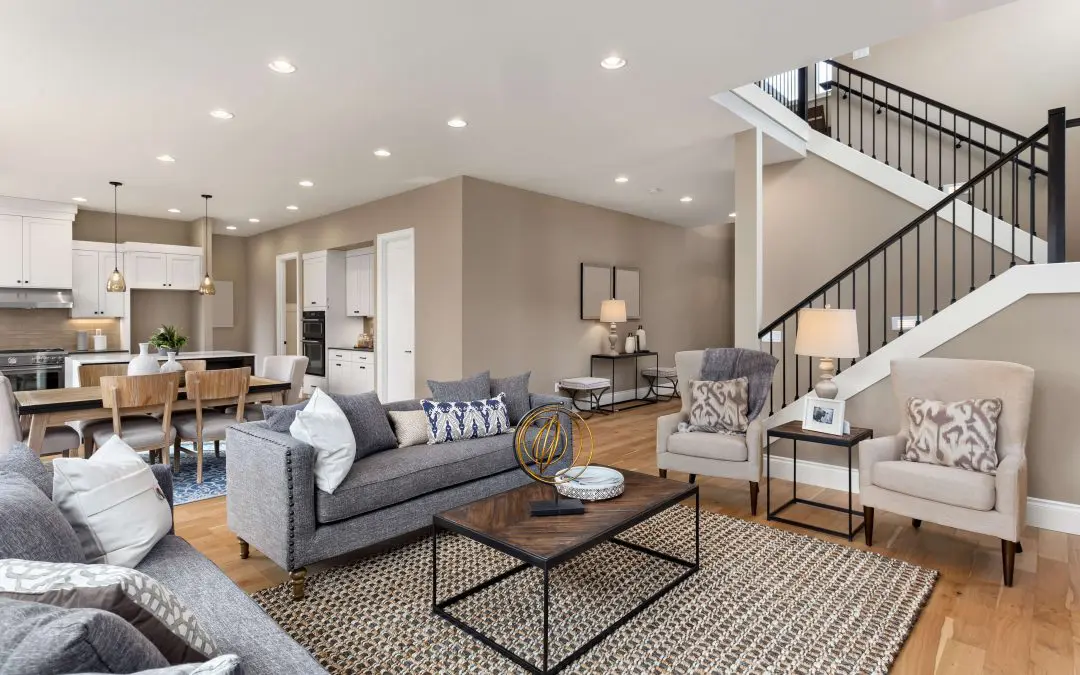Creating a welcoming and stylish living room starts with choosing the right furniture. Here’s a comprehensive guide to help you make informed decisions when choosing living room furniture.
Choosing Living Room Furniture Starts With Assessing Your Space
The first step in choosing furniture is understanding your living room’s layout and dimensions. Measure the room accurately, noting the positions of windows, doors, and architectural features. This will guide you in selecting appropriately sized pieces that fit well and allow for easy movement within the space. Create a floor plan to visualize different furniture arrangements.
Determining Your Style
Your living room should reflect your style and complement the overall aesthetic of your home. Whether you prefer a modern, traditional, or eclectic look, identify key elements that resonate with you. Look for inspiration in magazines, online platforms, or other rooms in your home. This will help you narrow down your choices and make a cohesive design.
Prioritizing Comfort and Functionality
Comfort and functionality are essential in a living room, as it’s a space for relaxation and socializing. When selecting sofas and chairs, choose pieces with supportive cushions and durable upholstery. If possible, test the furniture in-store to make sure it meets your comfort standards. Multi-functional pieces such as storage ottomans or coffee tables with built-in storage maximize utility.
Selecting the Right Sofa
The sofa is often the centerpiece of a living room, so choose one that fits your style and space. Consider the sofa’s size, shape, and configuration. A sectional might be ideal for a larger room, providing ample seating and versatility. For smaller spaces, a loveseat or apartment-sized sofa is a perfect fit. Pay attention to the upholstery material; leather is durable and easy to clean, while fabric offers a wider range of colors and patterns.
Choosing Complementary Pieces
Once you’ve selected a sofa, it’s time to choose complementary pieces. Accent chairs, coffee tables, and side tables enhance the look and functionality of the room. These pieces should match your style and not overcrowd the space. Balance is key, so opt for smaller accent chairs to maintain visual harmony if you have a large sofa.
Incorporating Storage Solutions
Living rooms often serve multiple purposes, so incorporating storage solutions is essential. Consider media consoles, bookcases, or built-in shelving to keep the space organized and clutter-free. These pieces should blend seamlessly with your furniture while providing ample storage for books, electronics, and decorative items.
Focusing on Quality and Durability
Investing in high-quality furniture will save you money in the long run. Look for well-constructed pieces with sturdy frames and durable materials. Check for warranties or guarantees, as reputable manufacturers stand by their products. Quality furniture looks better and withstands the wear and tear of daily use.
Balancing Aesthetics and Budget When Choosing Living Room Furniture
While it’s tempting to splurge on designer pieces, focus on balancing aesthetics and budget. Determine your budget beforehand and allocate funds to essential pieces like the sofa and storage items. Look for sales, discounts, or high-quality second-hand furniture to save money without compromising style.
Choosing the right furniture for your living room involves careful consideration of space, style, comfort, and functionality. By following these guidelines, you’ll create a beautiful and comfortable living room that reflects your taste and lifestyle.
Choosing Living Room Furniture FAQs
What factors should I consider when choosing a coffee table?
Consider the size, shape, and height of the coffee table in relation to your sofa and other seating. The table should be proportional to the seating area and leave enough space for movement. Think about functionality—do you need storage, or is the table mainly for decorative purposes? Choose a material and style that complements the rest of your furniture.
How do I choose the right lighting for my living room?
Layered lighting works best in a living room. Combine ambient lighting (overhead lights), task lighting (reading lamps), and accent lighting (wall sconces or table lamps) to create a balanced and flexible lighting scheme. When selecting light fixtures, consider the room’s natural light and the activities you’ll be doing in the space.
What role do accent pieces play in living room design?
Accent pieces like throw pillows, blankets, and artwork add personality and character to your living room. They allow you to introduce new colors, textures, and patterns without a major overhaul. These items can be easily changed seasonally or as your taste evolves, keeping your living room decor fresh and up-to-date.
Carolina HomePro Inspections provides home inspection services to customers in Charlotte, NC, and the Rock Hill area of South Carolina. Contact us to request an appointment.

